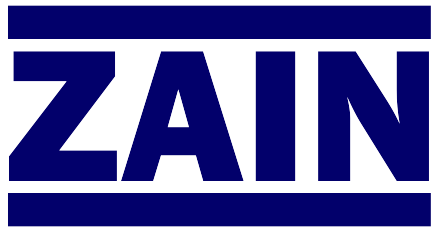The Future of Mixing Equipment: Embracing Automation and IoT Integration
Mixing equipment is undergoing a transformative shift as automation and IoT (Internet of Things) technologies reshape industrial processes. Today’s manufacturers seek smart solutions that deliver consistent product quality, reduce downtime, and enable data-driven decision-making. In this comprehensive guide, we explore how mixing equipment evolves through automation and IoT integration, the benefits and challenges of adoption, real-world examples, and steps to implement smart mixing systems. By understanding these trends, process engineers and decision-makers can position their operations for greater efficiency and competitiveness.
Understanding Automation in Mixing Equipment
Automation refers to using control systems—such as PLCs (Programmable Logic Controllers), advanced sensors, and software—to operate machinery with minimal human intervention. In mixing applications, automated controls can manage parameters like speed, temperature, and mixing time precisely. This leads to consistent batch-to-batch quality, reduced human error, and optimized resource usage. For example, an automated mixer can adjust its speed profile in real time based on viscosity feedback, ensuring optimal blending without manual oversight. As industries increasingly adopt automated mixing, the market for intelligent mixers is projected to grow significantl.

Key Components of Automated Mixing Systems
- Programmable Logic Controllers (PLC) & HMI: PLCs execute mixing recipes, start/stop commands, and safety interlocks. HMIs (Human-Machine Interfaces) provide operators with intuitive dashboards to monitor status and adjust parameters.
- Variable Frequency Drives (VFDs): These drives control motor speeds, enabling dynamic adjustments to shear rates and mixing intensity. VFDs contribute to energy savings by matching motor output to process needs.
- Sensors & Actuators: Sensors measure variables such as torque, temperature, pressure, and viscosity. Actuators (valves, pumps) respond to control signals, regulating ingredient feeds or cooling/heating loops.
- Recipe Management Software: Centralized software stores and retrieves mixing recipes, ensuring consistency across batches. Recipes can include multi-stage mixing profiles, pauses, and parameter thresholds.
- Safety & Interlocks: Automated mixers incorporate safety features like emergency stops, overload protection, and interlocks to safeguard equipment and personnel.
By integrating these components, mixing equipment becomes “smart,” reacting to process feedback rather than relying on fixed, manual settings.
The Role of IoT in Mixing Equipment
IoT integration means embedding connectivity and data collection capabilities within mixing equipment. Sensors transmit real-time data—such as motor load, mixing torque, temperature, and runtime—to centralized platforms or cloud-based analytics tools. This connectivity enables remote monitoring, predictive maintenance, and continuous process optimization. For instance, an IoT-enabled mixer can send alerts when vibration or motor temperature exceeds thresholds, preventing unexpected failures. According to market research, IoT-enabled mixers and digital technologies are transforming the industrial mixers market by supporting remote diagnostics and automatic maintenance.
Benefits of IoT Integration
- Real-Time Monitoring & Alerts: Operators can view live dashboards displaying mixer performance metrics. Alerts via email/SMS notify maintenance teams when anomalies occur.
- Predictive Maintenance: Historical data and machine learning models predict equipment wear or potential failures, allowing maintenance scheduling before breakdowns.
- Data-Driven Optimization: Analysis of mixing data identifies trends (e.g., energy consumption patterns) and suggests process adjustments to improve efficiency.
- Remote Access & Control: Engineers can remotely review mixer performance and make parameter changes without being physically on-site, increasing operational flexibility.
- Traceability & Compliance: Storing mixing data logs supports regulatory compliance (e.g., in pharmaceuticals or food processing), providing audit trails for each batch.
IoT transforms mixing equipment from standalone machines into connected assets within a broader smart manufacturing ecosystem.
Industry 4.0 and Smart Manufacturing Context
The adoption of automation and IoT in mixing aligns with Industry 4.0 principles, emphasizing digitalization, connectivity, and data analytics in manufacturing. In smart factories, mixing equipment is integrated into MES (Manufacturing Execution Systems) and ERP (Enterprise Resource Planning), allowing synchronized operations across production lines. Data from mixers can feed into quality control systems; for example, viscosity profiles recorded during mixing can be compared against desired specifications automatically. This holistic connectivity supports continuous improvement cycles and rapid response to process deviations.
Example: Smart Batch Production
Consider a chemical plant producing specialty polymers. A smart mixing system records torque and temperature throughout each batch. Data analytics reveals that small deviations in mixing torque correlate with downstream product variability. Engineers adjust mixing profiles in the recipe management software to maintain torque within optimal bands. Over time, product consistency improves, scrap rates decrease, and energy usage drops due to more efficient mixing profiles.
Case Study: Automated Mixer in Dairy Processing
A mid-sized dairy company implemented an automated and IoT-enabled mixing solution for yogurt production. Key features included:
- Automated CIP (Clean-in-Place) Sequences: After each batch, the system triggered cleaning cycles, reducing manual intervention and contamination risk.
- Sensor-Driven Viscosity Control: Inline viscometers provided real-time viscosity measurements, enabling the PLC to adjust mixer speed for consistent texture.
- Cloud-Based Monitoring: Data transmitted to a cloud dashboard allowed headquarters to monitor performance across multiple plants.
- Predictive Maintenance Alerts: Vibration sensors on the agitator shaft alerted maintenance when bearing wear exceeded thresholds.
As a result, the company reduced downtime by 30%, improved product consistency, and decreased cleaning cycle times by 20%. This real-world scenario highlights the tangible benefits of automation and IoT in mixing equipment.
Designing for Connectivity and Automation
When selecting or retrofitting mixing equipment for automation and IoT, consider:
- Modularity: Choose mixers with modular control packages that can be upgraded over time (e.g., adding new sensor types).
- Open Protocols: Prefer equipment supporting standard industrial communication protocols (e.g., OPC UA, Modbus TCP) to integrate with existing control systems.
- Edge Computing Capabilities: Some smart mixers process data locally (edge computing) for rapid decision-making without relying solely on cloud connectivity.
- Cybersecurity Measures: As mixers connect to networks, ensure secure authentication, encrypted data transfer, and network segmentation to protect against cyber threats.
- Scalability: Plan for scalability; initial installations may be small-scale, but future expansions may require adding more mixers or integrating across multiple facilities.
Thoughtful design ensures that automation and IoT investments yield long-term returns rather than requiring frequent overhauls.
Overcoming Adoption Challenges
Transitioning to automated, IoT-enabled mixing systems can present challenges:
- Upfront Investment: Costs for sensors, connectivity infrastructure, and software can be significant. However, ROI often materializes through reduced downtime, energy savings, and improved quality.
- Skill Gaps: Staff may need training in data analytics, industrial networks, and automated control. Partnering with technology providers or consultants can bridge these gaps.
- Integration Complexity: Existing legacy systems may require middleware or custom interfaces for seamless integration.
- Data Overload: Collecting vast amounts of data can overwhelm teams if not managed with clear KPIs and analytics strategies.
- Regulatory Concerns: In regulated industries, ensuring data integrity and secure storage is crucial for compliance.
By addressing these issues—through phased implementation, pilot projects, training programs, and robust cybersecurity practices—companies can successfully adopt smart mixing equipment.
ROI and Business Impact
Quantifying benefits helps justify automation and IoT investments in mixing equipment:
- Reduced Downtime: Predictive maintenance can cut unplanned downtime by up to 50%, translating to significant production savings.
- Energy Efficiency: Automated speed and torque control optimize motor usage, leading to lower energy bills.
- Improved Quality: Consistent mixing parameters reduce batch variability, decreasing scrap and rework costs.
- Faster Time-to-Market: Automated recipe management and rapid changeovers enable quicker introduction of new products.
- Operational Visibility: Real-time dashboards empower managers with actionable insights for better decision-making.
A sample ROI scenario: A mid-scale chemical processor invests in IoT sensors and automated controls for three mixing vessels. Within a year, predictive maintenance reduces unplanned downtime by 200 hours, saving tens of thousands in lost production. Energy optimization yields a 10% reduction in electricity usage for mixing operations. Combined quality improvements lower rejects by 15%. These tangible outcomes demonstrate the business case for smart mixing equipment.
Future Trends: AI, Machine Learning, and Beyond
The evolution of mixing equipment will continue with advanced technologies:
- AI & Machine Learning (ML): ML algorithms analyze historical mixing data to optimize recipes dynamically, predict maintenance needs more accurately, and adapt to raw material variability.
- Digital Twins: Virtual replicas of mixing systems simulate processes under various conditions, enabling process refinement before physical trials.
- Augmented Reality (AR) for Maintenance: Technicians can use AR devices to view equipment schematics overlaid on physical mixers, simplifying troubleshooting.
- Edge AI: Embedding AI at the edge allows mixers to autonomously adjust parameters in real time without cloud latency.
- Sustainable Automation: Integration of green energy sources, energy recovery systems, and eco-friendly materials in mixer design aligns with corporate sustainability goals.
Staying informed on these emerging trends helps organizations plan long-term strategies and maintain a competitive advantage in rapidly evolving industries.
Implementing Smart Mixing Solutions: A Roadmap
- Assess Current State: Audit existing mixing equipment, control systems, and data capabilities. Identify gaps and opportunities.
- Define Objectives: Clarify goals—e.g., reduce downtime by X%, improve batch consistency by Y%, or enable remote monitoring.
- Pilot Project: Select a representative mixing application to implement automation and IoT features. Monitor performance improvements and gather lessons learned.
- Scale Up: Gradually extend smart mixing solutions to additional vessels or facilities based on pilot outcomes.
- Training & Change Management: Provide training for operators, maintenance staff, and engineers on new technologies, data interpretation, and cybersecurity practices.
- Continuous Improvement: Regularly review performance metrics, refine analytics models, and update equipment configurations to adapt to evolving process needs.
- Partner with Experts: Collaborate with technology providers, system integrators, and consultants experienced like ZAIN in automated mixing solutions to ensure best practices.
Following this roadmap ensures a structured approach, mitigating risks and maximizing benefits.
Additional Resources
- Related Blog: Understanding Shear Rates: How Mixing Equipment Affects Product Texture – Learn how mixer shear rates influence product quality.
- Related Blog: Static vs. Dynamic Mixing Equipment: Which Is Right for Your Process? – Explore mixer types and selection criteria.
- Industry Insight: Smart Manufacturing & IoT Integration – Overview of Industry 4.0 principles and IoT applications.
These resources provide deeper insights and practical guidance for embracing automation and IoT in mixing processes.
Conclusion
Automation and IoT integration represent the future of mixing equipment, driving improvements in quality, efficiency, and operational visibility. By adopting smart mixers with connected sensors, automated controls, and advanced analytics, manufacturers can reduce downtime, optimize energy usage, and maintain consistent product standards. While challenges exist—such as initial investment, skill requirements, and cybersecurity considerations—a structured implementation roadmap and collaboration with experts can ensure successful adoption. Embracing these technologies not only addresses current process needs but also positions organizations for emerging innovations like AI-driven optimization and digital twins.
If you have questions or are ready to explore automated and IoT-enabled mixing solutions for your operations, reach out to our team for expert guidance and support.

